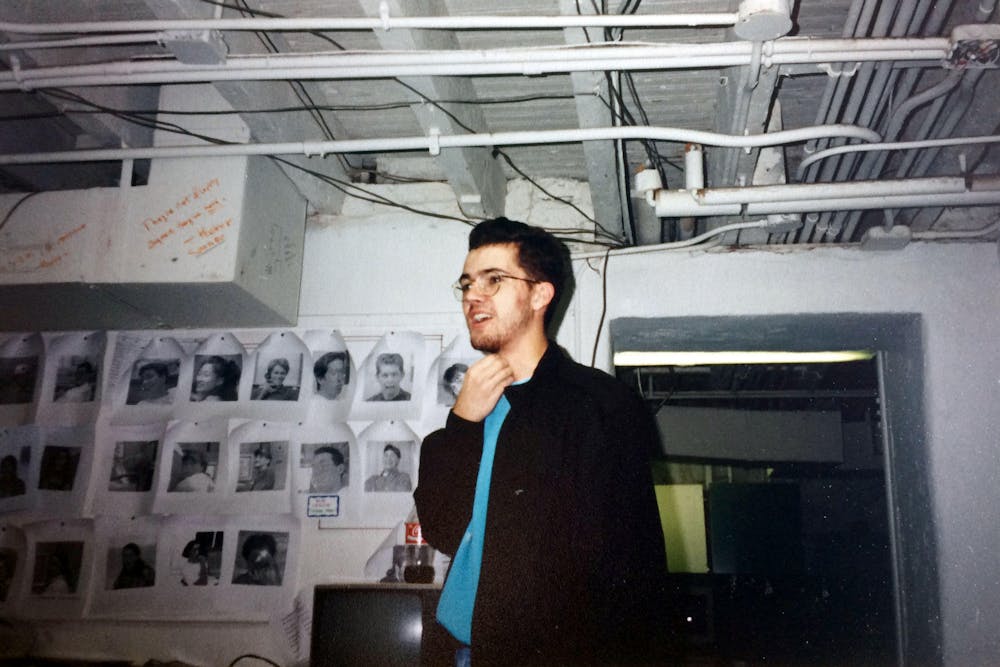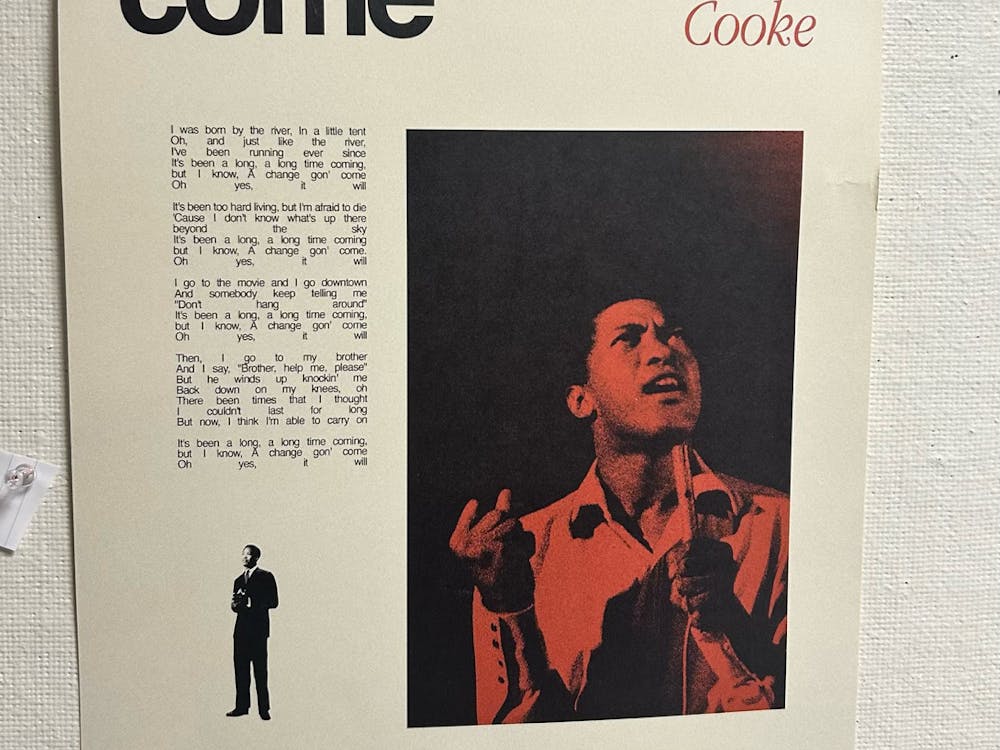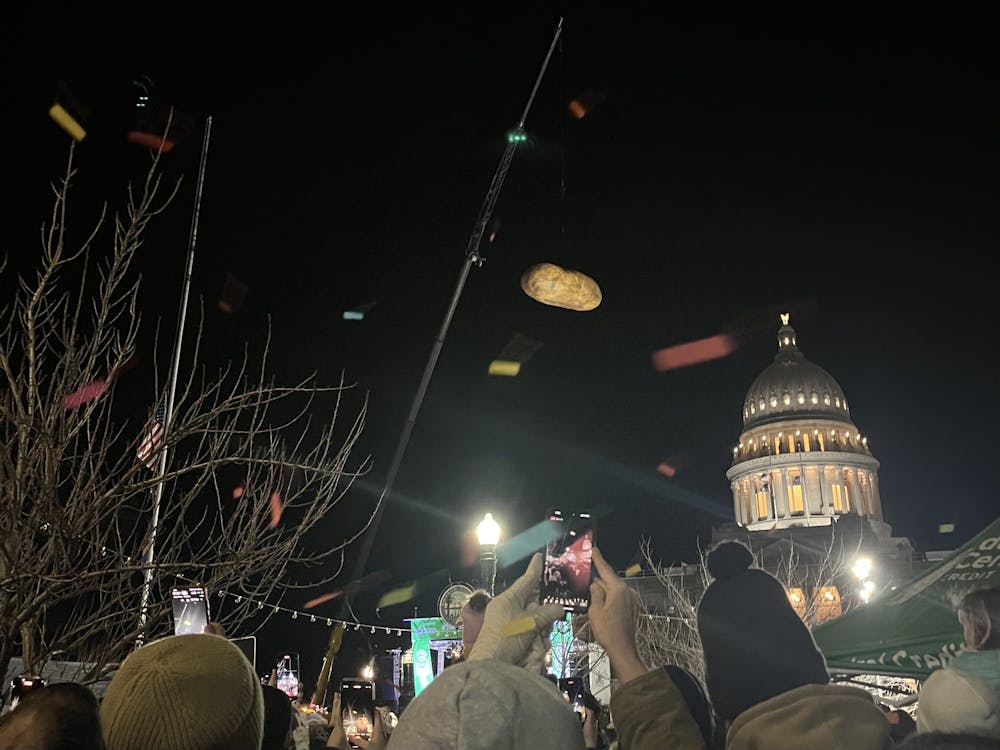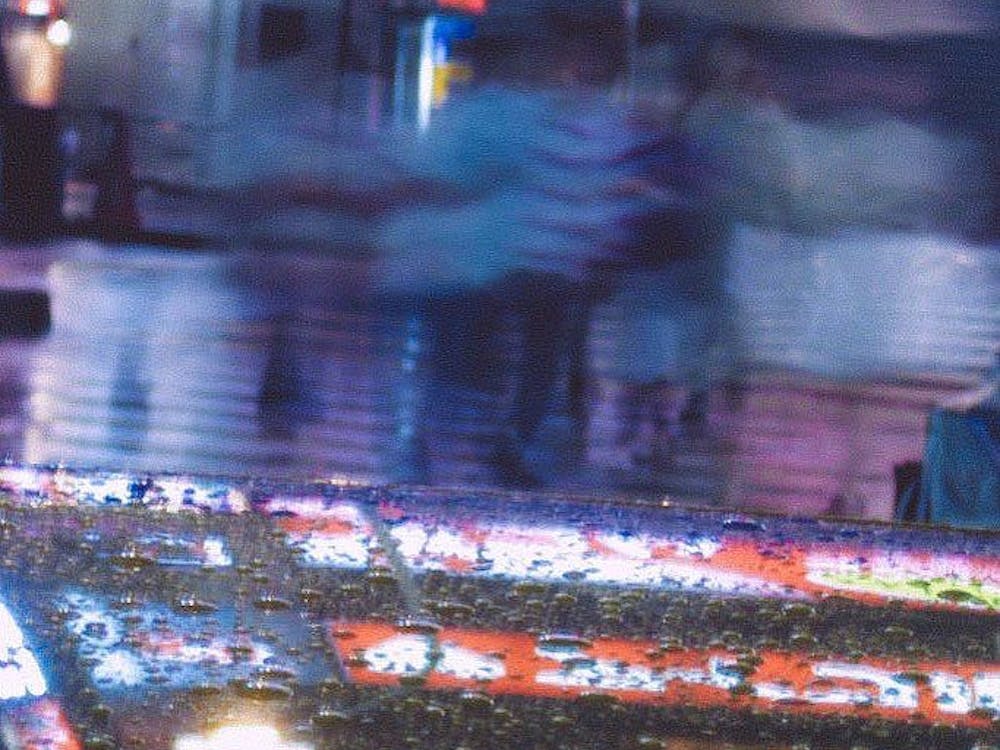Matthew Dujnic attended Hopkins from 1992 to 1996. He knew on the day he arrived that he wanted to work on campus publications. But news wasn’t his bag, so The News-Letter wouldn’t see him until junior year, when he was roped in as the Editorial Cartoonist. Freshman year, The Black and Blue Jay got him instead — he was a writer and editor (and cartoonist) there for all of his four years. He became somewhat renowned for his weekly comic strip in The News-Letter, jhu.edu.
He graduated as a Writing Seminars major, but it was his Computer Science minor that ensured that he’d be scooped up by the Silicon Alley dotcom bubble. Twenty-five years later, Matthew still works on the Web — now a project director for a small e-commerce company. As then, he calls New Jersey home for his wife and two grade-school boys. He continued to cartoon after he graduated, creating several strips (available as compilations on Amazon), and he will likely draw more in the future.
The News-Letter: Why did you first decide to join The News-Letter?
Matthew Dujnic: It was decided for me (laughs). I came into Hopkins wanting to work with a humor magazine so I worked with The Black and Blue Jay for four years. But I got known as a cartoonist who would actually do work and who's willing to work with the papers. I know a lot of people in the Student Activities Commission. I was not a cartoonist, but the editors of The News-Letter would drop by the desk and ask me to do a cartoon and I would actually just draw them at the desk.
Sometimes they wanted editorial cartoons and then, you know, I stuck around over the summer, spent a lot of time with the Gatehouse. The point is, I'm in my senior year and by that time, I've been doing cartoons for the paper during the summer. And I had got bored of doing editorial cartoons because I thought it to be kind of a limiting format.
There's a certain thing that is in editorial cartoons: You make very obvious symbolism to make very blunt political points. So to mask my boredom I started putting my own characters into my cartoons, and then, when the school year started, the Features Editor said, “Okay we still need editorial cartoons, could you please move all your funny characters to their own comic strip?” And I said sure. I created jhu.edu and that ran every issue — 25 episodes, 25 issues. I think I might have missed the first issue.
N-L: What were some of your favorite articles that you wrote?
MD: I only wrote one article. It's kind of a dark topic, though. I never wrote articles, but once —and it was a time of extraordinary transition at The News-Letter, the ‘95-96 school year where everything was being computerized — that spring of ‘96, the entire campus was taken by the murder of Rex Chao. And I just remember what it was like in the Gatehouse, when the world knew what happened there and around the campus. I was in my 10th-floor apartment at The Charles. I remember doing something, that I had on music really loud, but then I looked outside because you know, two dozen cops had rolled around on the Beach, [on] that lane that goes around the Beach. My journalistic instinct took over and I realized I had to get down there. I got down and what I found was a murder scene. So that was the only article I wrote for The News-Letter because nobody else wanted to.
The intensity I saw in everyone making the paper — everyone was scared to death that they would do it wrong. This wasn’t just some lacrosse game; there was a murder on campus. Everyone had all the hard conversations. It was intense. But it became very clear that we were just kids. It’s obviously something I still think about to this day. I still admire that intensity of campus coming together, The News-Letter coming together and treating the whole thing with respect and kindness and making sure the people who are most affected by it got the attention they deserve.
N-L: How do you remember the culture and community of The News-letter when you were there? Were there any interesting traditions or group norms?
MD: The Black and Blue Jay ran a very sketchy cartoon piece that was done by grabbing talented cartoonists at The News-Letter. I went and discovered this guy did a piece with a caricature of all the staff members of the current News-Letter into cartoon animals, and they just wrote this parody of The News-Letter and life, but unfortunately it was making fun of a lot of people.
I also remember that The News-Letter team was just very friendly. The Editors-in-Chief were just classmates of mine. We didn't share any classes but we were the same age and it was at this point where I needed to publish my new film magazine Frame of Reference [the official magazine of the Johns Hopkins Film Society], and I’d just ask the Editor-in-Chief Max, “You’ve got all this computer equipment. Can I just use it?” So I was able to just come and go, and I didn't get in the way too much. It was very open.
N-L: How did The News-letter impact your life as a college student? Why was it important to you?
MD: My extracurricular activities were always more important in senior year. I learned so much more about whatever you do in the world.
N-L: How do you remember The News-Letter impacting the greater student body at Hopkins?
MD: There was the Rex Chao article but other than that, I worked for Levering and manned the guest desk. At the desk, I actually made myself a name tag and I drew some cartoon characters on it and people would recognize the cartoon characters. They would say “Hey, those things!” because they recognized it from The News-Letter cartoons. It was such a good feeling that I created something that had a following outside of my friends. People knew the cartoon because it would just be there every week in the paper.
N-L: How did your time at The News-Letter help prepare you for your career after college? What did you learn at The News-Letter?
MD: I used to encourage other people to do comics. You know, there's always going to be room to cram in another one. The News-Letter always tried to find somebody who would really do it. And it was even harder to get someone to do it on a schedule. When I became a cartoonist, I became something of a celebrity just because I submitted my cartoon to the features page without fail 25 weeks in a row. I didn't miss the deadline.
As you grow older and you enter the workforce, I think a lot of people talk about their degrees and all the skills they have, but if you can hit deadlines and you can show up, then you are the most valuable employee ever, and just getting reliable is so important.





